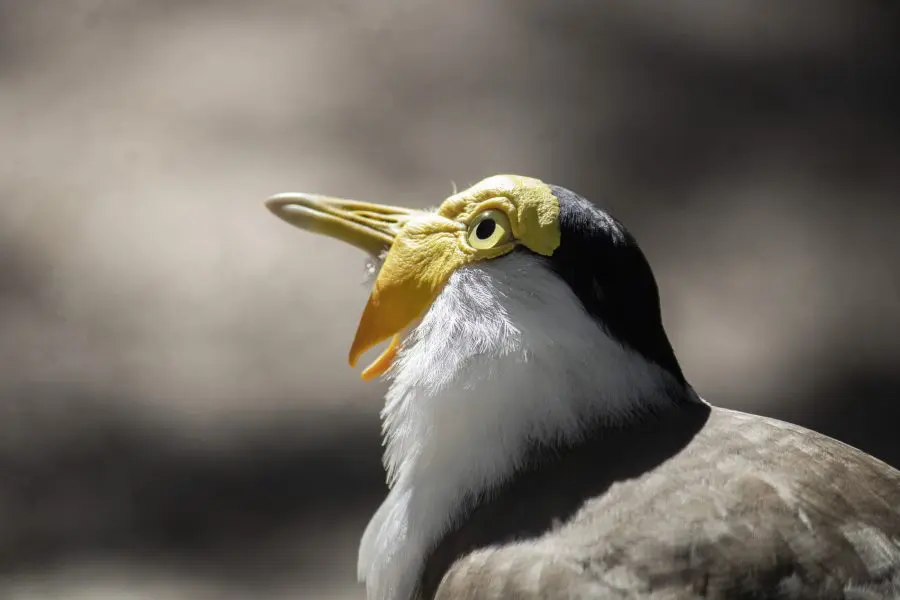

Can you spot one of our four masked lapwings around the aviary?
If you’ve visited the Zoo, you’ve likely met a lot of our more than 900 animal residents. Some animals are easy to spot, but others are often not as easy to see because of their habitat set up, their personalities or their sleep cycles among other things. We wanted to start a “Meet the Animals” section of our blog to introduce you to some of the residents that you may (or may not have) met yet!
While wandering around either of our two free-flight aviaries, you may spend most of your time looking up. Most of our beautiful bird species do take to the air, but in order to spot some of our most unique-looking feathered friends, you’re going to have to scour the ground. It may be a bit tricky to catch a glimpse of one of these ground-dwelling species, our masked lapwings, but these birds will let you know they’re nearby with their high-pitched vocalizations, especially during breeding season.
You can find two pairs of masked lapwings in our aviaries. Mom and Palmer live inside Cockatiel Creek and Cutie and Arnold call Lorikeet Landing home. Mom and Palmer are mother and son (Palmer hatched here at the Zoo 14 years ago) and Cutie and Arnold (Palmer’s cleverly named brother) are a mated pair.
Since this species spends most of their time on the ground, they are primarily insectivorous. They forage the terrain for insects and worms, including some live mealworms and crickets scattered around by their keepers. However, their animal care teams do make sure they get a well-rounded diet by also including formulated pellets and produce in their meals.
If you look carefully between our aviary’s foliage during the spring months, you may spot a pile of seemingly haphazardly arranged sticks under a tree. While it may look like an unassuming arrangement, it is likely one of our masked lapwings’ nests. This species is known for being rather poor nest builders, but they make up for it by adamantly defending their eggs. They are known to swoop at nearby predators, using the spurs on their wing joints to help with their defense, although this behavior is rarely seen in our aviaries.
“They are also known to do a behavior where they will pretend to be injured by hopping on one leg, to draw attention away from their nest and chicks,” said Lands of Change area supervisor Kristen Gagnon.
These dedicated parents produce small brown speckled eggs, which helps them to camouflage in with ground. When the chicks hatch, they also have speckled coloring for added protection.
If you want your best chance at seeing any of these quirky four, make sure to keep your eyes peeled to the ground and check the nearby ponds to see if they’re getting one of their daily baths in.
“They’re neat little birds,” noted Kristen. “Definitely worth checking out.”
Special thanks to Flammio Financial Group, Stifel-Garvin Wealth Management Group, Artemis IT, and Jim and Darleen Barfield. Their generosity makes our work possible!
Brevard Zoo is an independent, not-for-profit organization that receives no recurring government funding for our operating costs. Your generous support enables us to continue to serve our community and continue our vital animal wellness, education and conservation programs.
